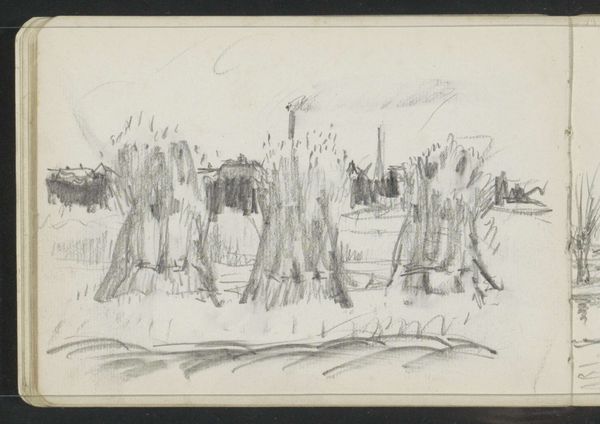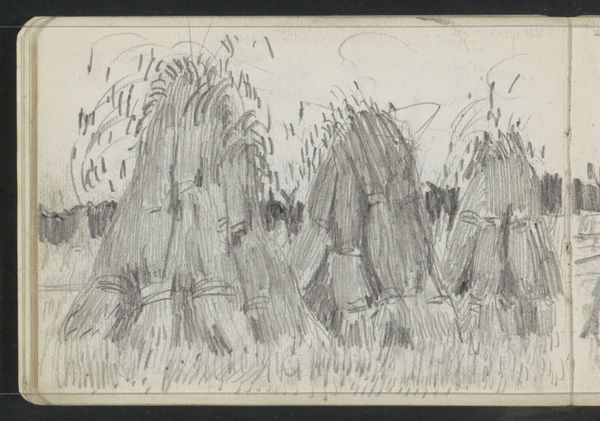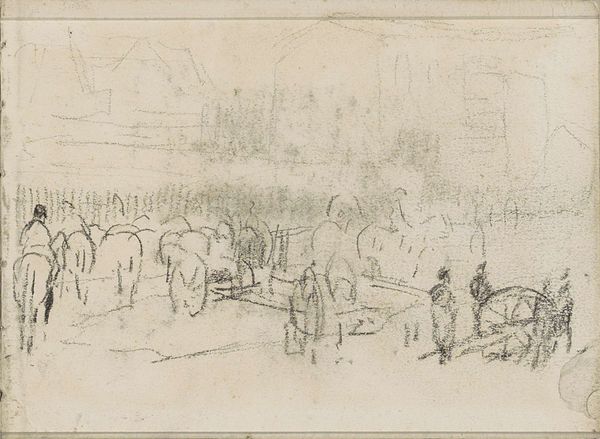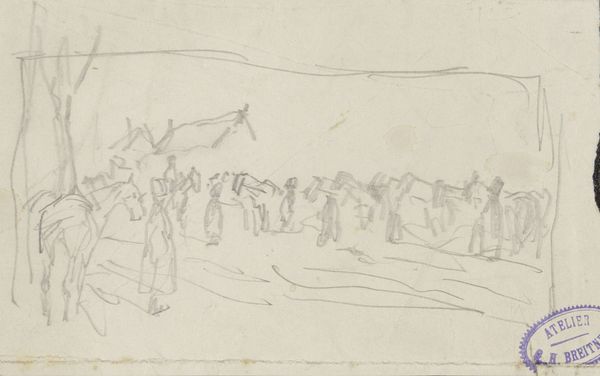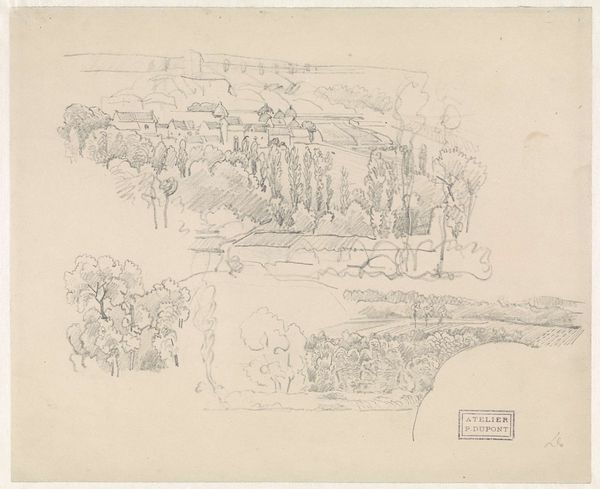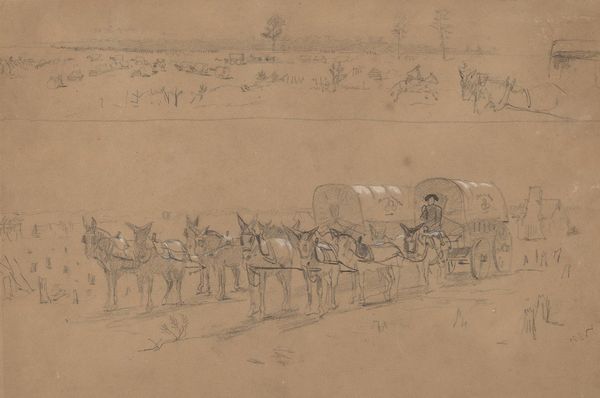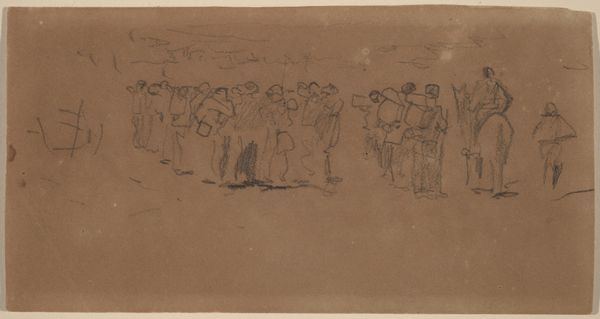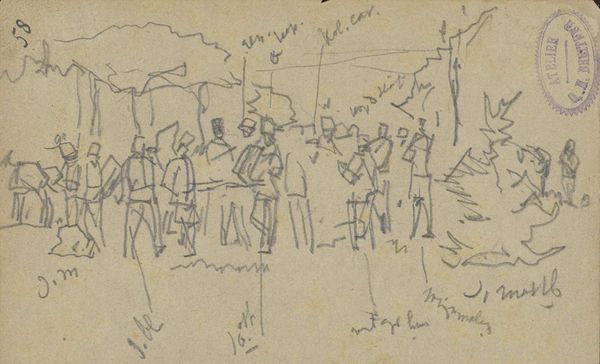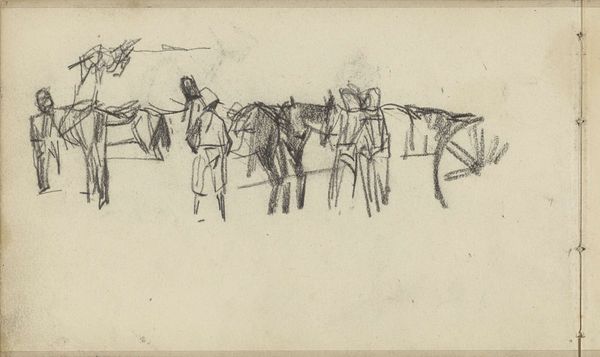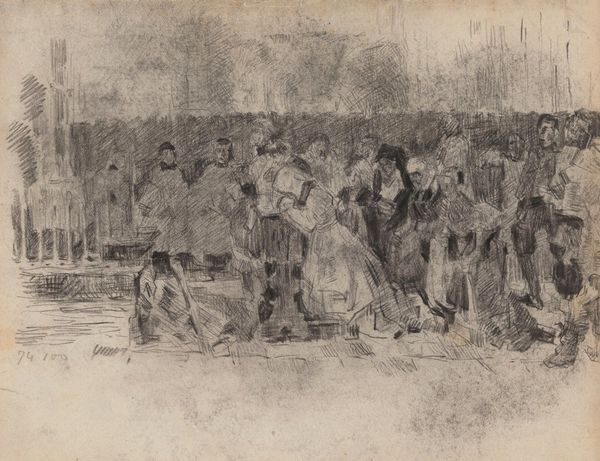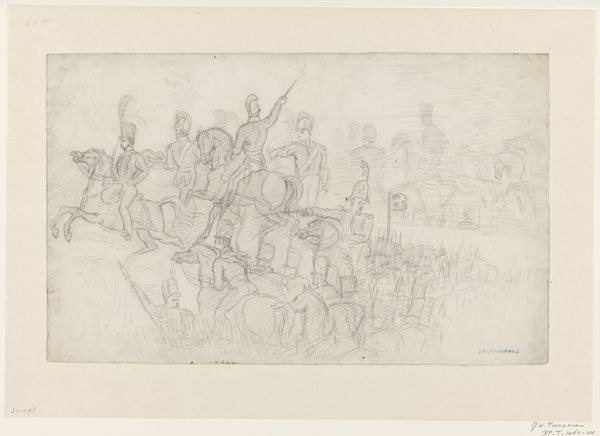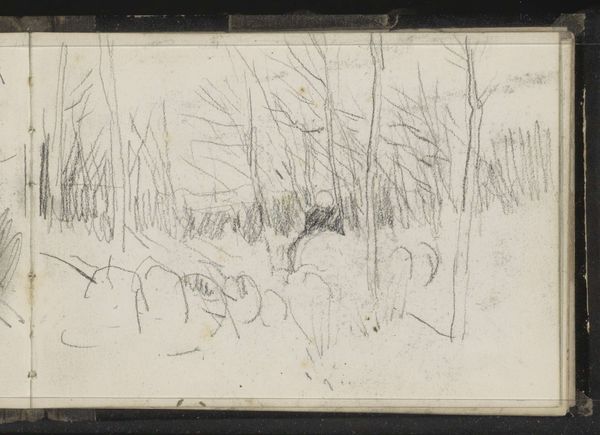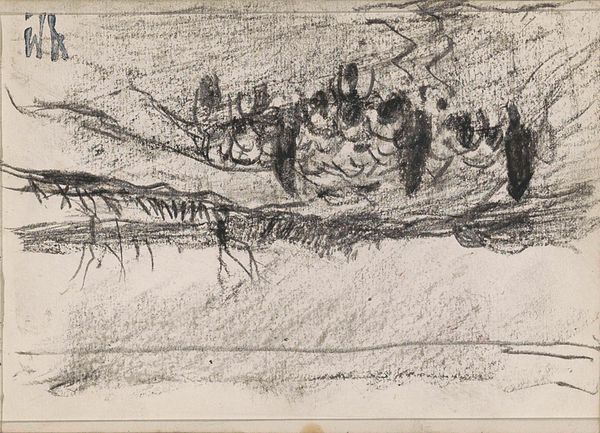
Copyright: Rijks Museum: Open Domain
Editor: So, this is Johanna van de Kamer’s pencil drawing, "Korenschoven op een veld," placing it sometime between 1883 and 1922. It has an ephemeral, fleeting quality, almost like a memory fading. What can you tell me about this sketch? Curator: Look closely at the repetitive strokes, the clear marks of labor in creating each haystack with a simple pencil. It reveals a great deal about the artist’s engagement with the materiality of the land, doesn’t it? Van de Kamer isn’t just depicting a scene; she’s documenting the agricultural process, the reaping and gathering. How do the visible marks of production, the pencil strokes, change your interpretation? Editor: That's interesting. I was initially drawn to the atmospheric perspective, but I see your point about the mark-making. It emphasizes the work involved, giving these humble haystacks a new importance. So, the focus is shifted to the agricultural work, how it becomes this recorded activity. Curator: Precisely! Consider also the availability of drawing materials at this time, how access to them dictated who could produce such sketches. Were sketchbooks and pencils readily available or signifiers of a particular social standing and education? These objects mediate Van de Kamer's encounter with this landscape. Editor: I never considered the social context of simple things like pencils and paper! It does bring another dimension to this landscape. Thinking about the tools used in art creation this way reveals stories of labour beyond just the farmers in the field. Curator: Absolutely. It reframes our understanding of the entire scene. What initially seems like a simple impression becomes a commentary on material culture and social production. Editor: I’ll never look at a pencil sketch the same way again. Curator: Me neither.
Comments
No comments
Be the first to comment and join the conversation on the ultimate creative platform.
